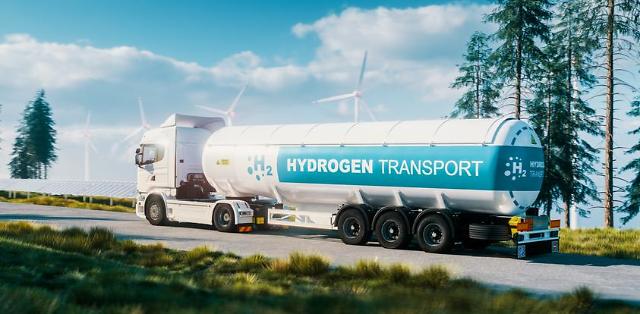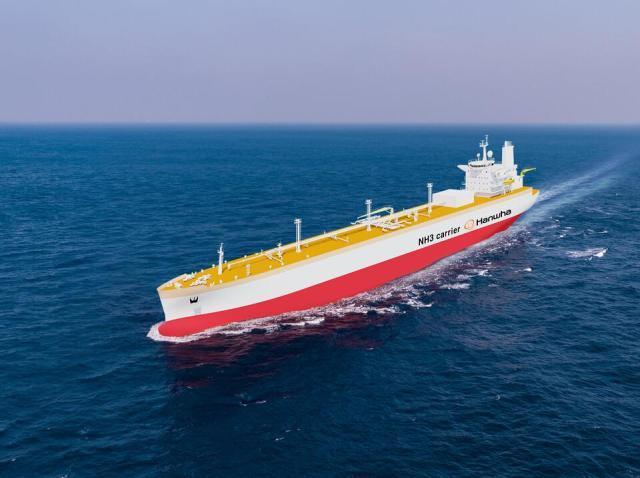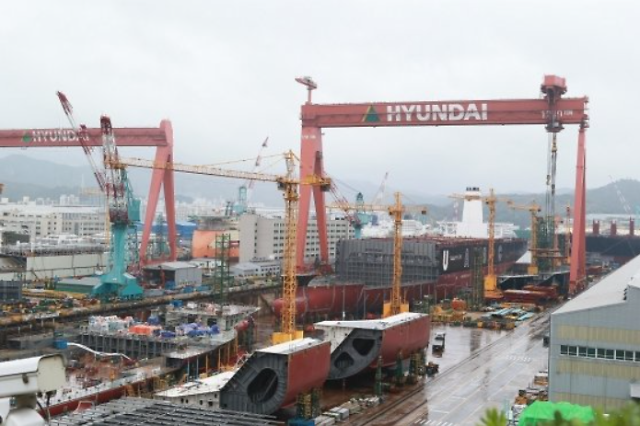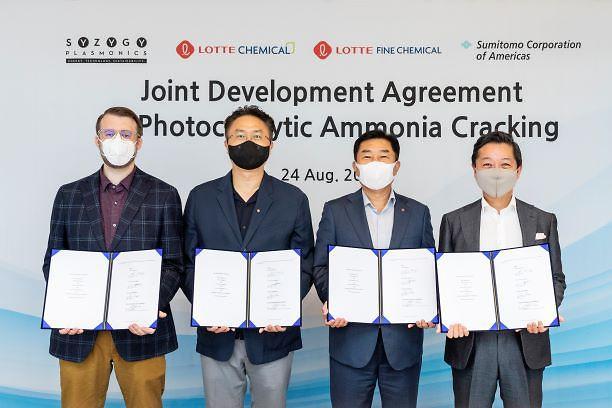
[Gettyimages Bank]
Because hydrogen has a very low volumetric energy density, transporting hydrogen in gas or liquid forms is not very efficient. Hydrogen is extremely flammable when it is mixed with very small amounts of air. Because of the dangers of explosions, many people feel uncomfortable about hydrogen fuel stations in urban residential areas.
Ammonia, a composite of one nitrogen atom and three hydrogen atoms, plays a vital part in a hydrogen supply system. Hydrogen is created into ammonia for transport. Ammonia is stable in a liquid state at room temperature and has a much higher energy density than hydrogen. When tanker trucks carry ammonia to local hydrogen extraction facilities, ammonia is broken down into nitrogen and hydrogen. Hydrogen is stored inside a pressurized tank to fuel vehicles and power plant turbines.
The Ministry of Trade, Industry and Energy said in a statement on July 15 that a consultative body has been formed to promote green ammonia technology. The group is comprised of research institutes and companies such as Doosan Fuel Cell, the hydrogen fuel cell wing of South Korea's Doosan Group, Hyundai Motor and POSCO.
"Currently, about 95 percent of hydrogen fuel is produced with byproduct gas generated at factories such as steel mills. The other five percent is extracted from natural gas. It is vital to research and develop green ammonia technology to efficiently produce and transport hydrogen," Bae Joon-hyung, a ministry official in charge of novel energy business, told Aju Business Daily.
Through the consultative body, South Korea will establish a value chain that covers the production, transport, extraction and utilization of green ammonia. "Zero-carbon green ammonia will play a vital role in the future net-zero carbon era," the ministry said, adding the body will also set new safety standards for the green ammonia value chain.
Copyright ⓒ Aju Press All rights reserved.





View more comments